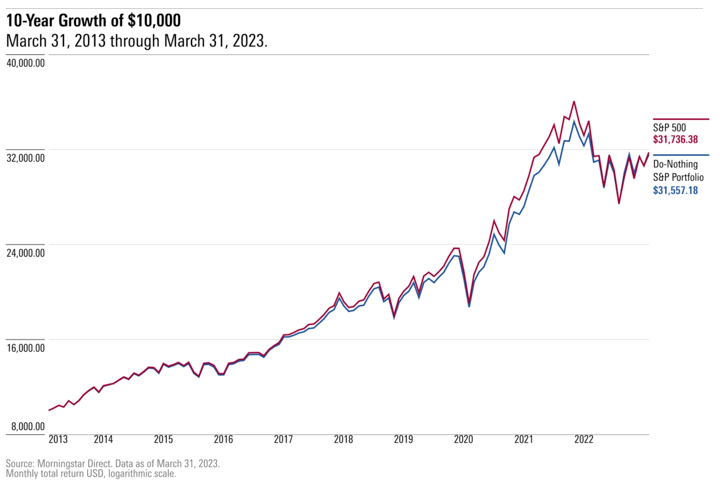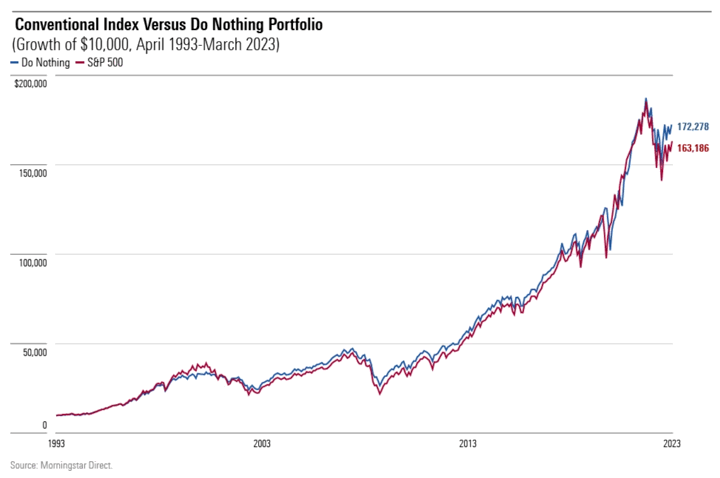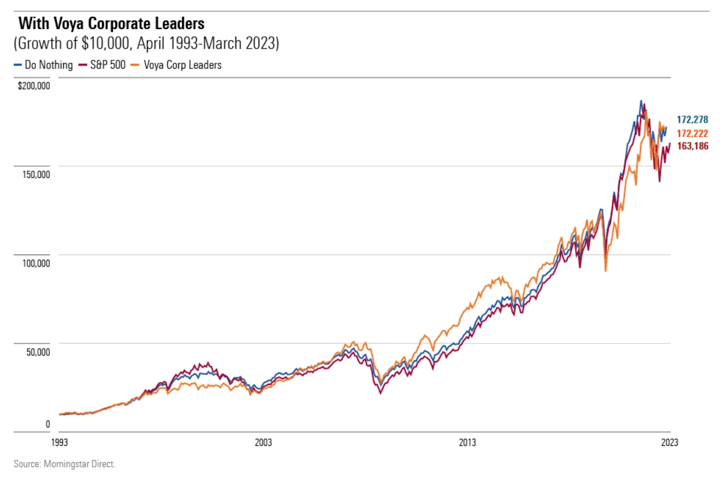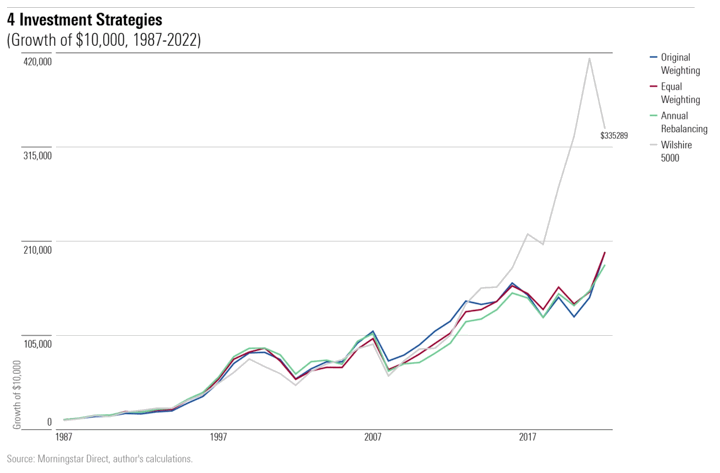Morningstar has been running an interesting series of articles on “Do Nothing” portfolios where they take the idea of “Buy and Hold” to the extreme. When you buy and hold a traditional index fund, the holdings still change over time. New companies are added, companies are merged or acquired, and some are taken out every year.
What if you instead bought the individual stocks in the S&P 500 from 10 years ago, and then did absolutely nothing? You wouldn’t buy any new companies. If a company was bought out, you just kept the cash. (Dividends were reinvested.) From the article What Beat the S&P 500 Over the Past Three Decades? Doing Nothing, you would have found out that the “No Nothing” portfolio has actually outperformed the S&P 500 during this 2013-2023 period by a tiny bit:

John Rekenthaler extended this backtest to the past 30 years. The “Do Nothing” portfolio still won slightly from 1993-2023. From the article More Lessons From the Do Nothing Portfolio:

He added a real-world example of “buy and hold forever” in the Voya Corporate Leaders Trust (LEXCX), which is a very quirky mutual fund that essentially bought equal amounts of stock from 30 of the largest US companies back in 1935 and then sat on its hands. Voya Corporate Leaders Trust also did quite well over the same 1993-2023 period:

So we should all just do nothing right? Well, not so fast. The next article The Ultimate Buy and Hold Portfolio examined buying the 10 largest US companies as of December 1986 and then doing nothing. That result wasn’t as great, and it didn’t help if you held them by market-weight, equal-weight, or rebalanced. The Total US Stock Market index (Wilshire 5000) won by a large margin, although the gap only really widened after 2010.

It appears that doing nothing can do surprising well, but you still run the risk of missing out on owning some breakthrough companies over the long run.
My takeaway is that we should be very thankful that we can buy a simple, low-cost Total US stock market or S&P 500 index fund and just “do nothing” while it does all the work. The market cap-weighting system automatically adjusts to include new companies in whatever new industry may emerge. You don’t have to worry about missing out on the next Apple or Google. I sleep well knowing that I will always own the entire haystack and all the needles inside.
 The Best Credit Card Bonus Offers – 2025
The Best Credit Card Bonus Offers – 2025 Big List of Free Stocks from Brokerage Apps
Big List of Free Stocks from Brokerage Apps Best Interest Rates on Cash - 2025
Best Interest Rates on Cash - 2025 Free Credit Scores x 3 + Free Credit Monitoring
Free Credit Scores x 3 + Free Credit Monitoring Best No Fee 0% APR Balance Transfer Offers
Best No Fee 0% APR Balance Transfer Offers Little-Known Cellular Data Plans That Can Save Big Money
Little-Known Cellular Data Plans That Can Save Big Money How To Haggle Your Cable or Direct TV Bill
How To Haggle Your Cable or Direct TV Bill Big List of Free Consumer Data Reports (Credit, Rent, Work)
Big List of Free Consumer Data Reports (Credit, Rent, Work)
Thank you for your insight on buy and hold. Just curious, how has the sell in May and go away strategy performed?
I’m afraid I don’t track that strategy. If you go away, when do you come back? Sounds like a lot of taxable events as well.